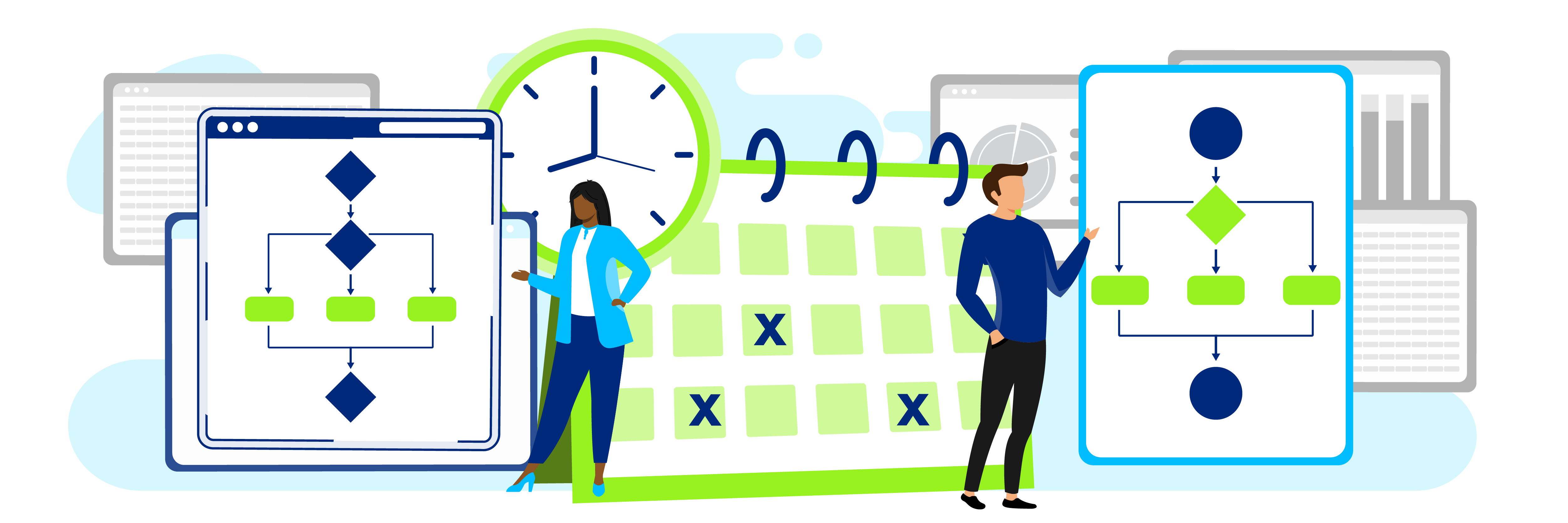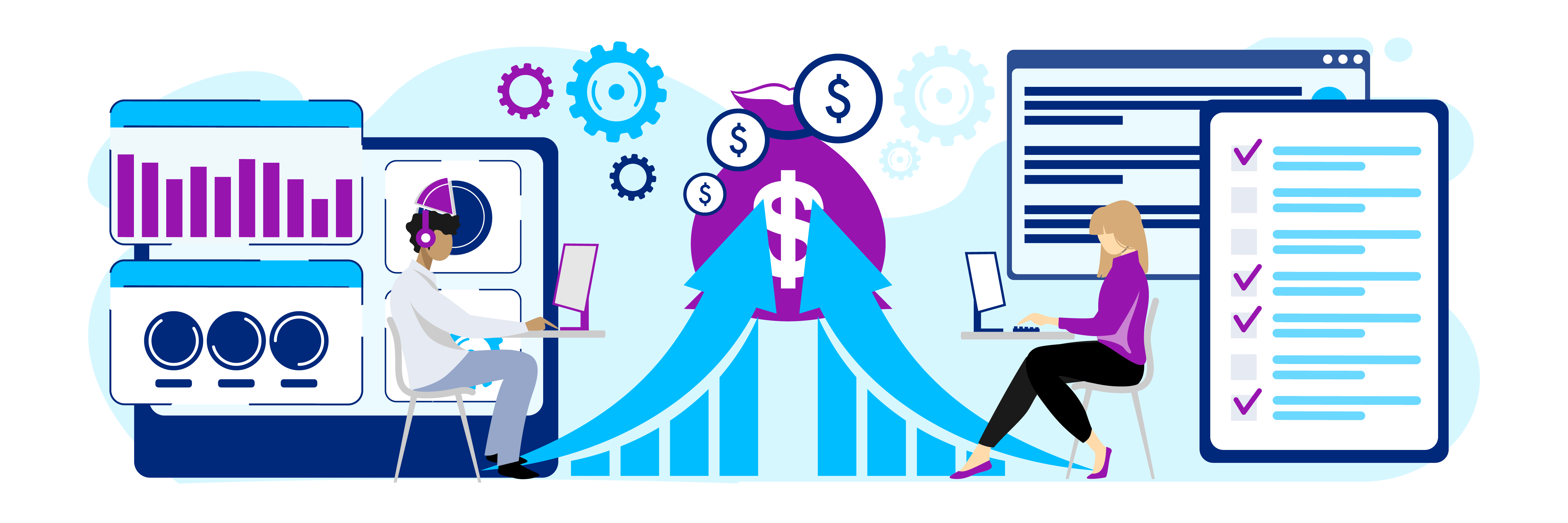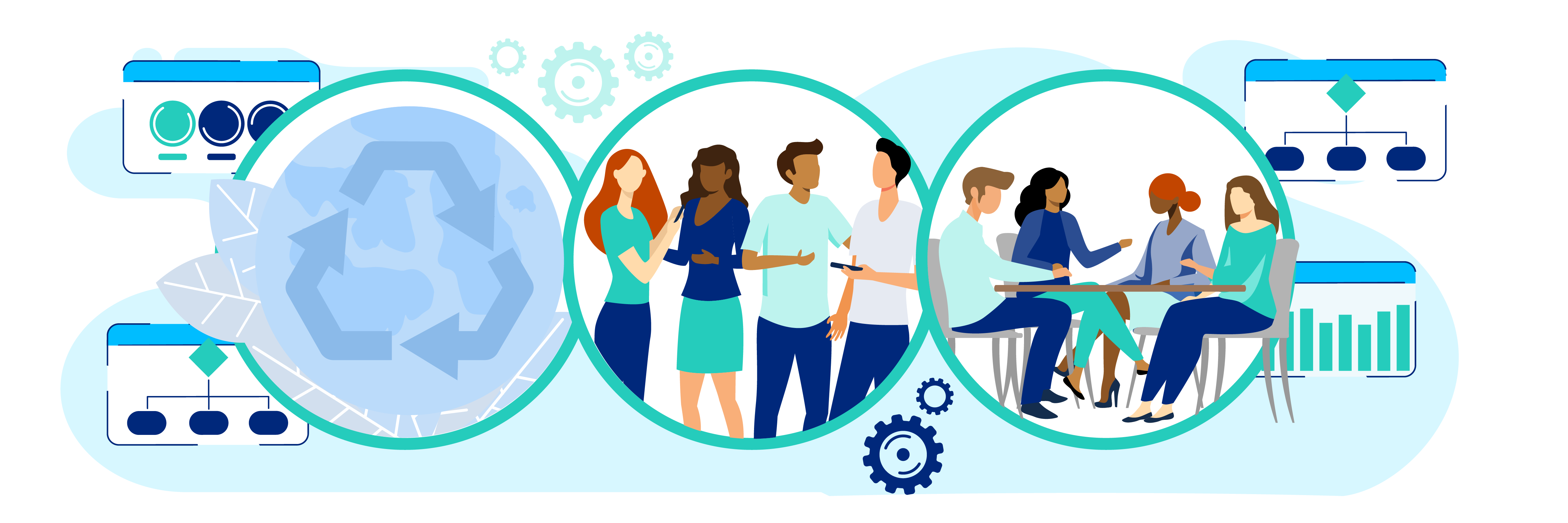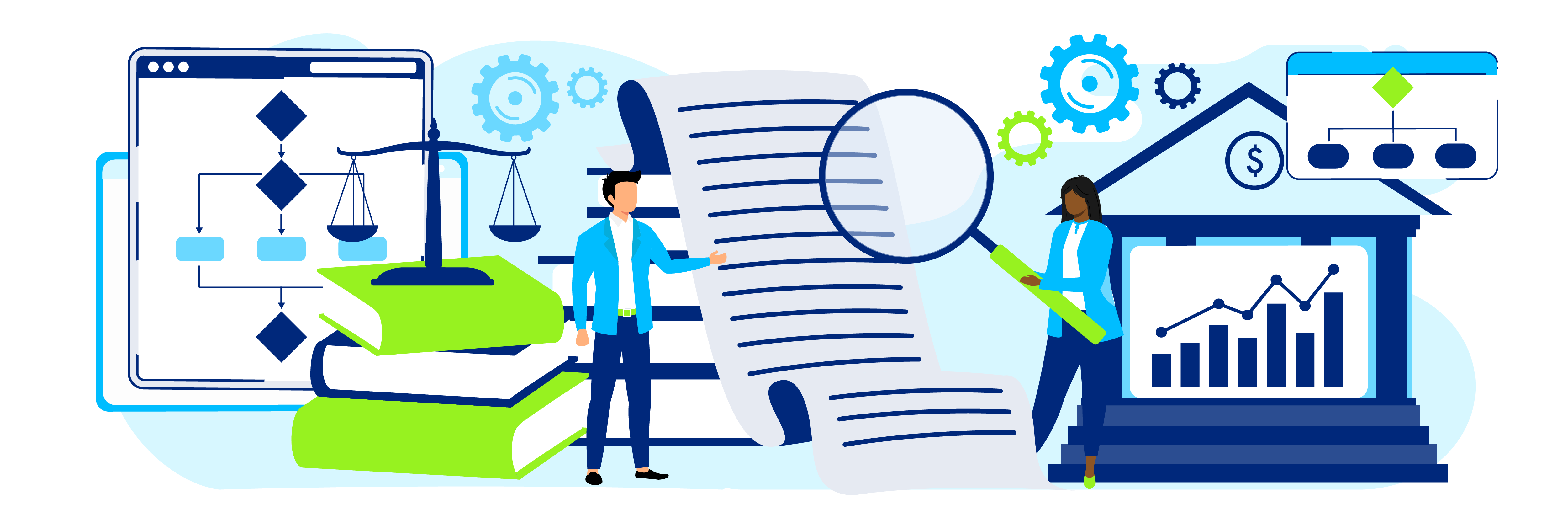In my last blog, I let everyone know how exciting I thought business logic can be when it’s transformed by decision automation. Here is another batch of decision automation examples from Sapiens Decision’s client projects.
As I described previously, decision automation is enabled by decoupling business logic from its underlying application, rule engine or spreadsheet. It sounds simple enough, but when implemented, organizations gain speed-to-market, increased productivity and reduced regulatory risk.
I think I’ve saved the best for last, so read on for five more reasons why I’m wild about decision automation.

Shave months off time-to-market for your new insurance (or banking) products
In developing new digital products, like insurance policies, product owners model conditions and decision criteria, often starting with a spreadsheet. Business requirements documents (BRDs) are created to capture requirements for IT to translate business logic, written by Business Analysts, into executable code. But the scarcity of IT resources and inaccurate interpretation of BRDs can force product owners to wait months for models to become new products. This delayed time-to-market impacts profitability.
Sapiens Decision tackles these problems head-on by enabling product owners and business analysts to build new financial products independently of IT. “No code” tools, as easy to understand as a spreadsheet, enable defining and testing of product business logic directly to generate executable code automatically.
Now, business analysts and product owners without any coding experience can use Decision’s tools and methods to create new products with just a few weeks of training. This approach provides carriers with an important time-to-market edge.

Make your bots smarter
Robotic process automation (RPA) is a software technology that makes it easy to build, deploy, and manage software robots that emulate humans’ actions interacting with digital systems and software. RPA is perfect for repetitive, easy-to-understand activities. The downside is that RPA bots lack the intelligence or business logic to perform higher-value work.
A better approach is to integrate Decision with RPA to improve the functionality and efficiency of operations. Decision helped a large government contractor responsible for implementing health insurance to better manage its workforce to align program priorities with work queues. Using Decision with RPA and analytics enabled them to route the right work to the right worker at the right time. The organization has achieved far greater efficiencies, saving millions of dollars in headcount costs, without compromising quality or accuracy.

Improving quality is like finding money
Anyone involved in lending is painfully aware of quality issues. From consumer loans to mortgages, quality gaps and the effort required to fix them work in tandem to decrease productivity and drive up cost per loan. Complex and frequently changing loan policies lead to process inconsistencies and errors requiring rework. Lenders take a hit on productivity, and mortgage lenders require post-closing staff to correct errors. But throwing people at the problem, especially for quality checks, has not been effective. Additional resources assigned to checking data become expensive overhead.
Decision automation decreases the lender’s cost per loan by improving productivity and quality simultaneously. Using decision automation, lenders can access business logic easily, make changes quickly, and maintain complete auditability. Manual checklists supporting quality processes can be eliminated. Productivity increases when loan underwriters aren’t slowed down by interpreting complex rules or having to rely on spreadsheet tools. Resources assigned to quality checks can be rationalized or reassigned to higher-value work. With Sapiens Decision, mortgage lenders can save an average of $575 on their cost per loan through labor savings in fulfillment and production support alone.

Bullish on ESG reporting
The level of Environmental, Social and Governance (ESG) investment now stands at $20 trillion globally and is growing rapidly. This asset class is projected to comprise more than 20% of all assets under management by 2026. New reporting requirements, primarily in the EU, are still evolving but are intended to provide regulators and investors with financial and non-financial information for both public and private companies meeting certain guidelines, including market presence thresholds. The ESG reporting regime is complicated and still maturing.
Data requirements are perhaps the most challenging with metrics required for environmental and social impacts by the business. Since ESG data is often divided in siloes across the business or manually logged in spreadsheets, a global, integrated picture of ESG gains and impacts is hard to paint.
Decision automation can address many of these reporting requirements using decision models that work with the firm’s data models to ensure consistent and accurate reporting. Analysts empowered with Sapiens Decision’s no-code tools can quickly update reporting requirements while ensuring complete auditability. Global banks use this capability to help classify and enrich data for ESG reporting.

Regulatory reporting without the headache
Organizations in the highly regulated Banking, Financial Services and Insurance industries are saddled with mountains of state and federal regulatory reporting requirements. And while regulatory reporting usually runs like clockwork, there are inherent process challenges that prevent the business from optimizing reporting and ensuring auditability. Multiple data feeds from various sources across the business need to be consolidated, often requiring manual checks and intervention. Undocumented and non-secure spreadsheets introduce traceability and auditability issues.
As regulations change, policies require accurate interpretation with updates made to the apps and systems that support reporting. The business’ ability to make frequent changes is also impacted by scarce IT resources, long update cycles, and challenges in identifying where changes need to be made.
Sapiens Decision’s capabilities streamline the process by externalizing business policies coded in applications and managing them centrally. Reporting requirements and policies can be modeled at a granular level and shared across reporting systems for greater reuse and flexibility. Sapiens Decision also improves visibility to reporting data sources with complete transparency for audit requirements. Major banks rely on our capabilities to reduce their reporting cycle times for complex reporting and improved efficiency.
Learn more about what Sapiens Decision can do for your business.

